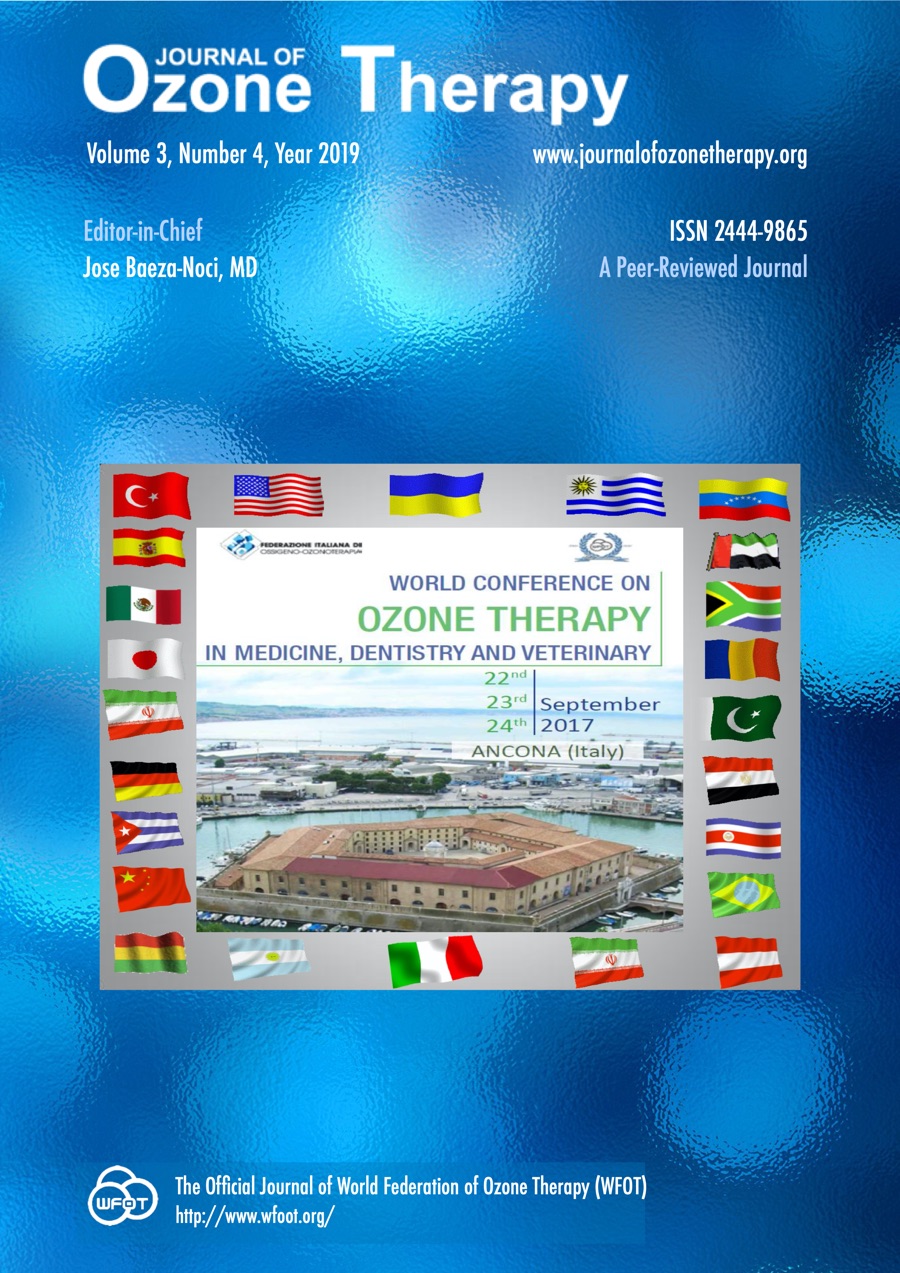Ozonetherapy for wound management in dogs [abstract]
DOI:
https://doi.org/10.7203/jo3t.3.4.2019.15425Keywords:
animal wounds, ozone therapy Abstract
Abstract
PURPOSE: To demonstrate the bactericide and regenerative capabilities of ozone through the execution of established protocols for infected wounds management.
MATERIAL AND METHODS:
- Ozone generator
- Medical oxygen
- Drinking water
- Nelaton lead
- Gauzes
- Polyethylene bags of different sizes
- 10 ml syringes
- 30G needles
Collect information of clinical cases of 5 patients with purulent wounds caused by bite of congener treated with ozone therapy (OP) with bagging technique (1) – injury washing with ozonized water and posterior bagged of affected area with polyethylene for 15 minutes with an ozone concentration of 56 mg/L and infiltration of wound edges with the gas in an anti-inflammatory concentration of 33 mg/L.
It was possible to observe short recovery processes of disinfection and regeneration of infected wounds using in only OP as wound management protocol.
DISCUSSION: Ozone bactericide property is probably the most studied topic because it was early used in the management of infected wounds (2,3). Later, with the invention of plastic materials, local treatment of septic limbs with gaseous ozone became possible. The regeneration helped with ozone has been intensively described, the acceleration of the process is related with cytokines release and the increase of tisular oxygenation (4).
CONCLUSION: Based on that, it is possible to conclude that ozonetherapy could be used as another therapeutic option in the management of infected wounds with bagging technique due to bactericide and regenerative properties of this gas.
 Downloads
Downloads
 References
References
Menéndez CS, González AR, Ledea LO, Hernández RF, León FO, Díaz GM. Ozono: Aspectos básicos y aplicaciones clínicas. Primera edición. Cuba. Editorial CENIC Centro Nacional de Investigaciones Científicas; 2008.
De Monte A, Gori C. Major ozonated autohemotherapy in the treatment of limb ulcers not responding to conventional therapy. Int. J Ozone Ther. 2011;10 (2):85-98.
Rakovsky S, Zaikov G. Application of ozone in Medicine. Chem Tech. 2009;3(3):237-248.
Valacchi G, Fortino V, Bocci V. The dual action of ozone on the skin. Br J Dermatol. 2005;153(6):1096-1100.
Downloads
Published
How to Cite
-
Abstract1414
-
PDF478
Issue
Section
License
Journal of Ozone Therapy applies the Creative Commons Attribution-NonCommercial 4.0 International License (CC BY NC 4.0) license to works we publish.
Under this license, authors retain ownership of the copyright for their content, but allow anyone to download, reuse, reprint, modify, distribute and/or copy the content as long as the original authors and source are cited. No permission is required from the authors or the publishers.
You may not use the material for commercial purposes.
Appropriate attribution can be provided by simply citing the original article, provide a link to the license, and indicate if changes were made.
You may do so in any reasonable manner, but not in any way that suggests the licensor endorses you or your use.




